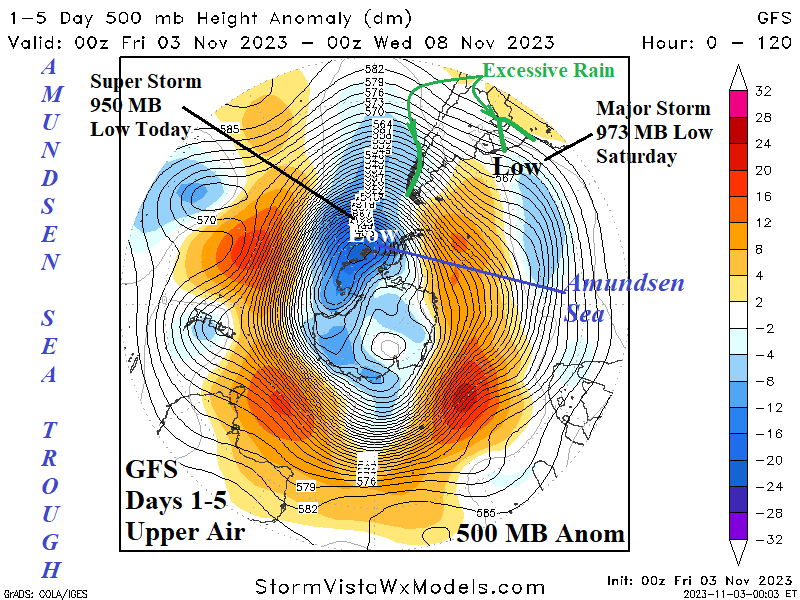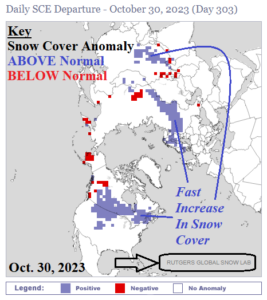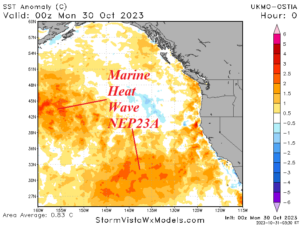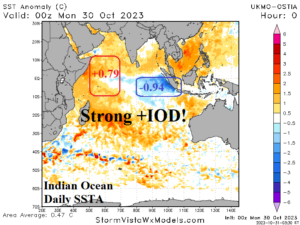Climate Forecast Factors for South America Into Mid-Summer
10/16/2023, 8:52 am EDT
Amundsen Sea Low Pressure Trough Ejects Low Pressure Systems; Brings Heavy Rain to Southeast Brazil
11/03/2023, 5:45 am EDT 



Fig. 1-4: The current southern oscillation index observations, snow cover anomalies from the Rutgers Snow Lab, SSTA pattern associated with marine heatwave Nep23A, and SSTA pattern associated with the +IOD regime.
Discussion: An update on key climate diagnostics around the world as October 2023 is ending. First, the southern oscillation index (SOI) has mostly been in a marginal El Nino signature since April implying that despite a strong oceanic El Nino, the El Nino climate pattern is weaker (Fig. 1). In fact, the SOI has shifted to neutral during the past week while today’s SOI was nearly +1.0. El Nino 2023 climate is suppressed due to the lack of usual thermal gradient in the SSTA pattern from east-to-west across the equatorial region (surface and subsurface) and poleward as SSTA are warm in the middle latitudes of both oceans. Second, snow cover has shifted above normal for much of the northern hemisphere as October closes (Fig. 2). Early season snow cover has spread into the Great Plains, across Southern Canada, and across Northwest Russia in late October adding a cold bias to the prevailing weather pattern. Third, the Northeast Pacific marine heatwave (NEP23A) weakened during early autumn shifting away from the West Coast. Currently, NEP23A seems to have split with one center north of Hawaii and a second west-southwest of California (Fig. 3). A progressive MHW to the U.S. West Coast would likely fortify El Nino for northern hemisphere meteorological winter. However, that expectation is in doubt. Finally, a robust positive phase Indian Ocean dipole (+IOD) is underway (Fig. 4). As +IOD has strengthened, a very wet low-to-middle atmosphere has emerged across the western tropical Indian Ocean stretching to Southeast Asia while the southern tropical Indian Ocean to Australia low-to-mid troposphere has dried significantly. Western Australia drought strengthening ahead!
